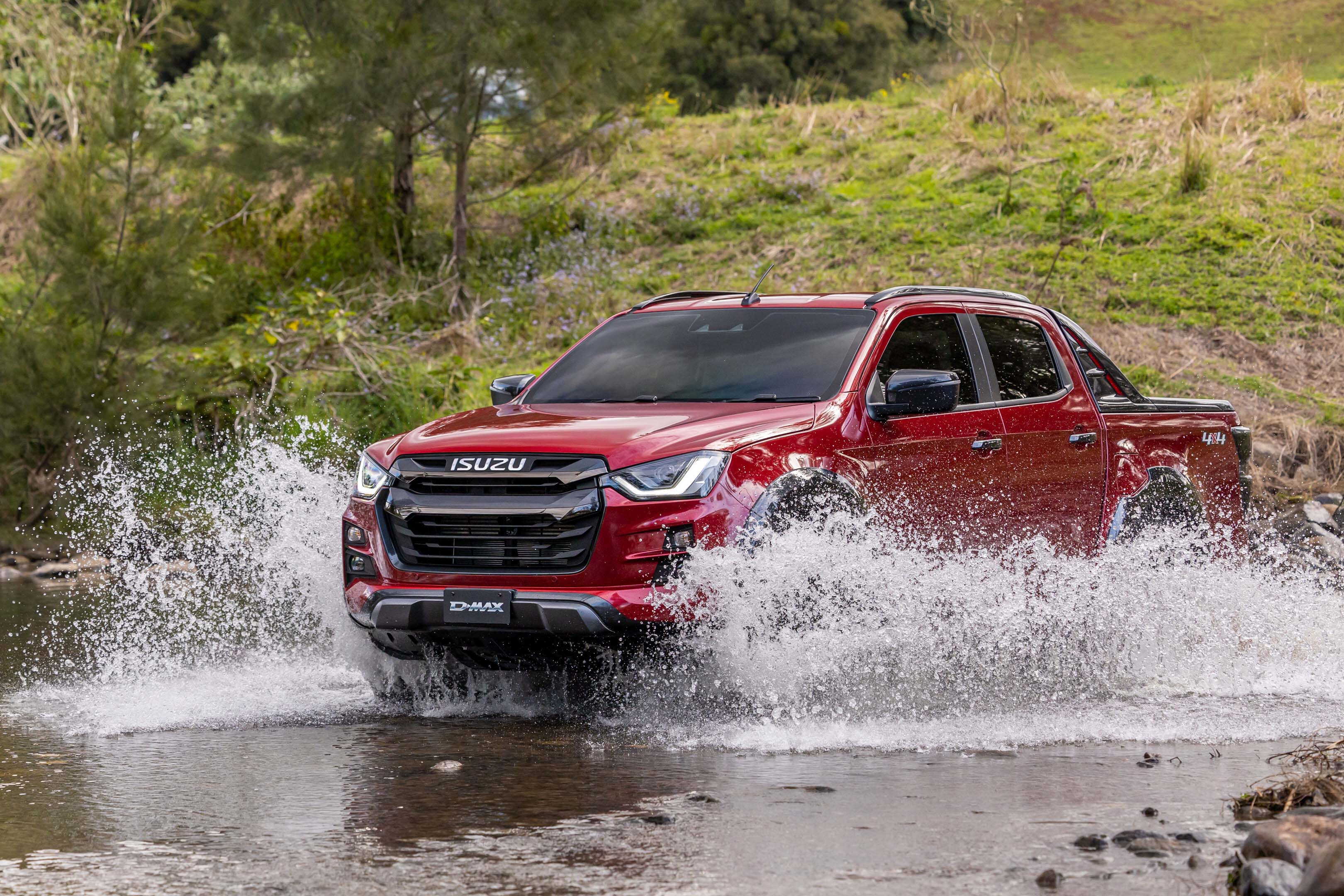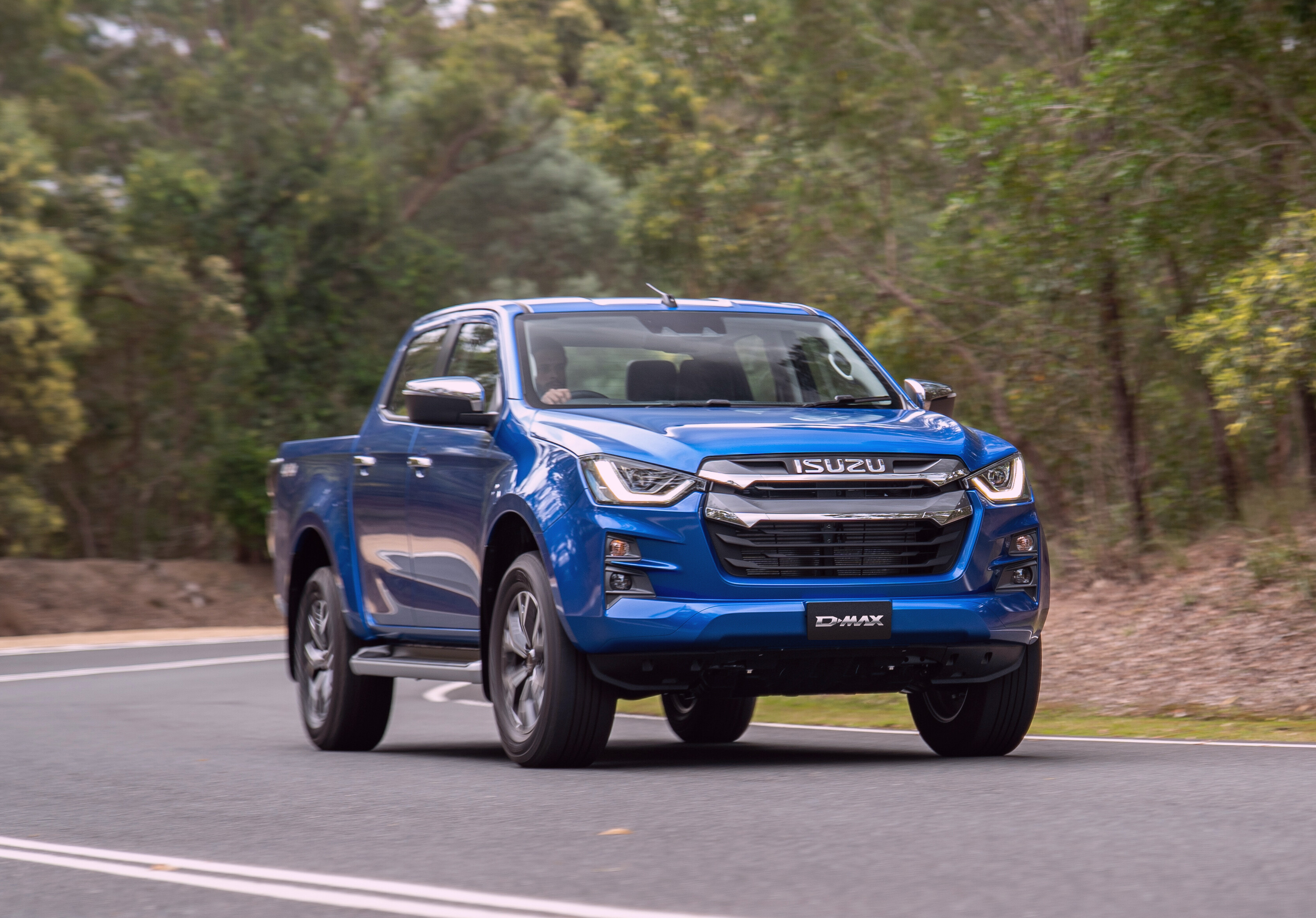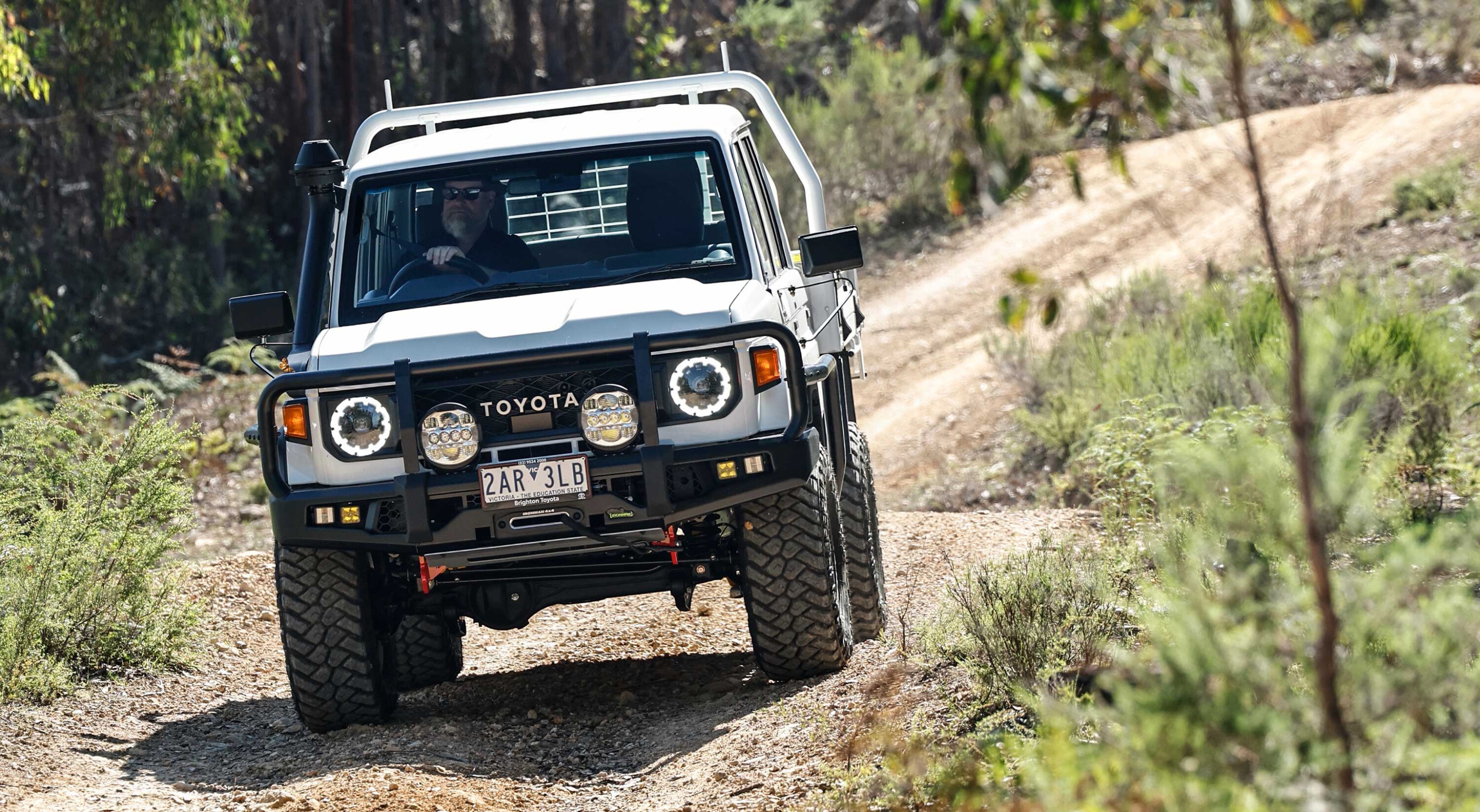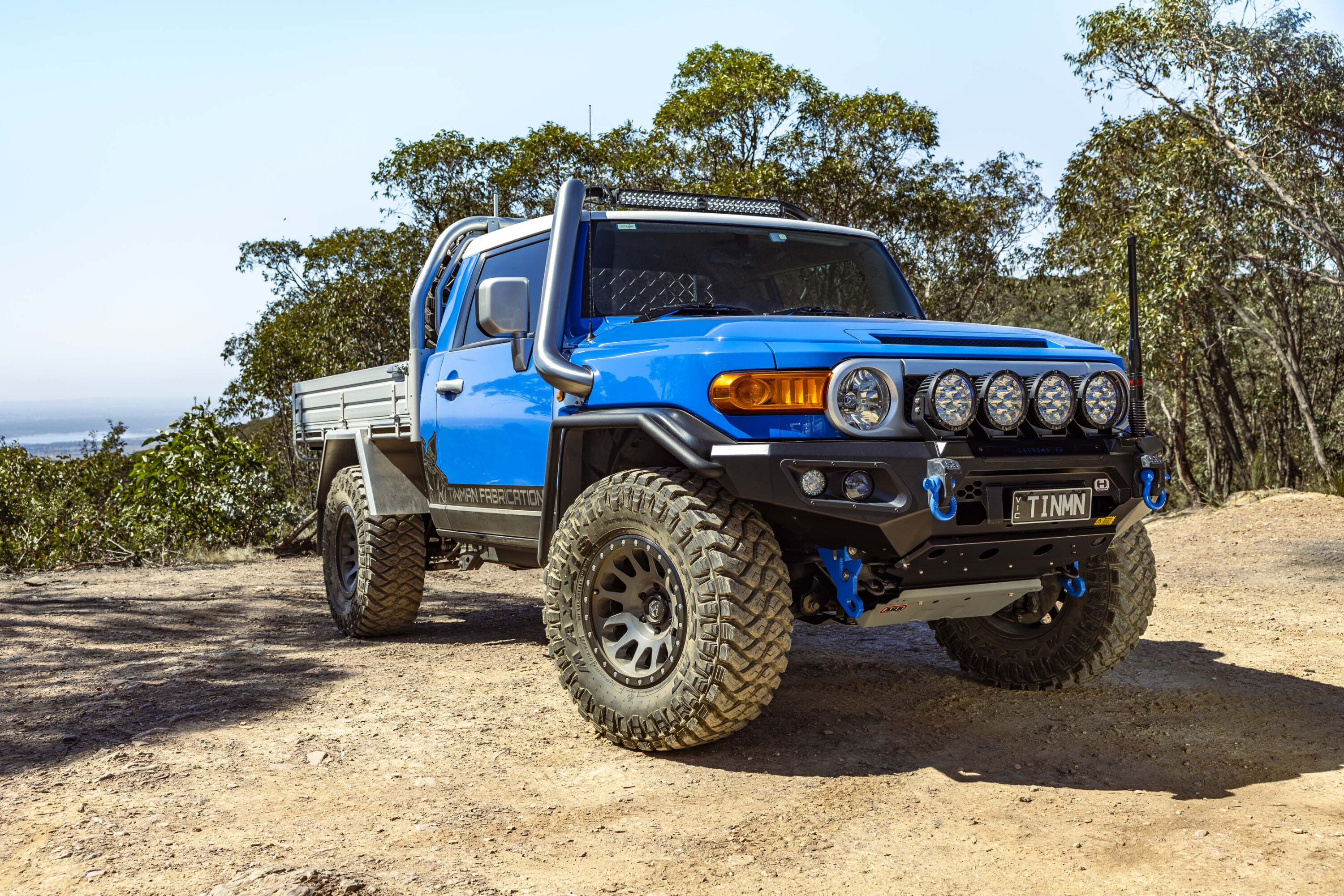Score breakdown
Things we like
- Biggest capacity 4-cylinder engine in class
- Top-spec D-Max a comparative bargain at $64,990
- Best out-of-the-box styling for the D-Max so far
Not so much
- No wireless charging
- 4J engine is noisy, by modern diesel standards
- Firm rear, harsh compared to coil rear options
The latest generation D-Max has remained largely unchanged since launching in 2020, with only minor visual tweaks and some finessing of the safety systems between years.
The 2023 range, however, brings bolder aesthetics, functionality improvements, and three new model variants, without messing with the proven formula underpinning the ute’s success.
Isuzu’s revered 3.0-litre turbo-diesel powers most of the 2023 range, with the same six-speed auto, so performance is unchanged. That’s not a bad thing, though, because the bulletproof 3.0-litre is what gets many buyers over the line.
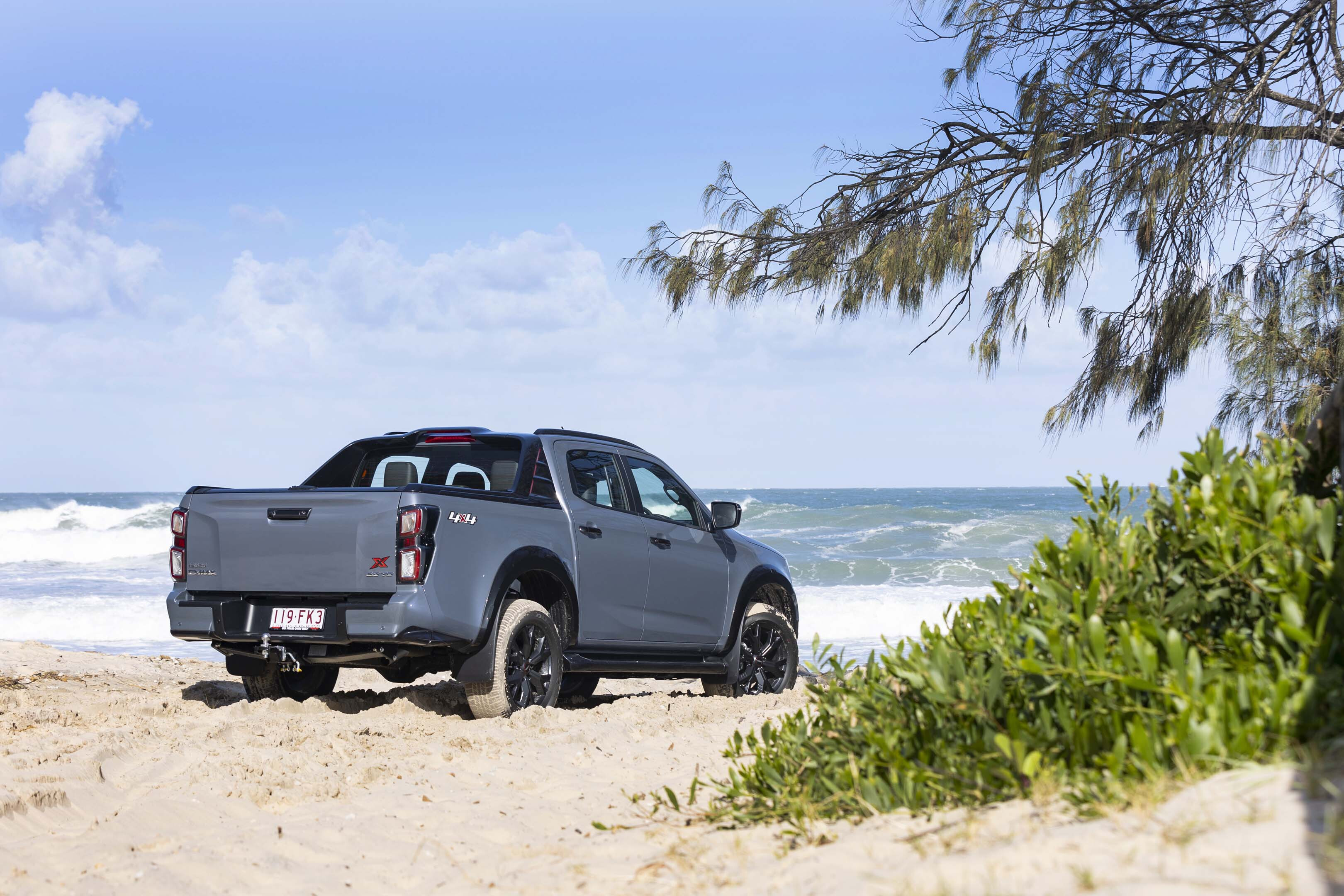
For those willing to consider a smaller engine, Isuzu’s 1.9-litre turbo-diesel will be available in the base-spec SX 4×4 model from next year, as well as two more 4×2 SX crew cab models. The smaller engine option has powered 4×4 D-Max variants for quite some time in markets like Europe, before earning its Aussie stripes this year in the 4×2 SX single cab model, so it’s a proven runner.
Around 50,000 current-gen D-Max’s are on the road in Australia, proving the dependable package is a popular one. A fresh colour palette, better looking wheels, tougher grille and a general freshen up should only improve its appeal.
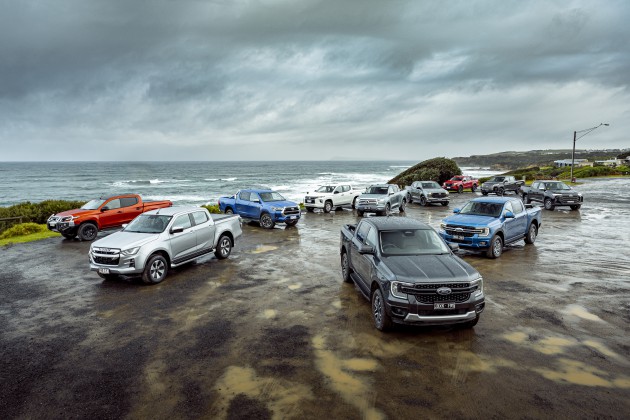
Dual-cab ute comparison 2022: The daily living test
Dual-cab utes have charged in as a firm favourite for family hauling and daily duties, well beyond the old mould of tradie tasks and off-road adventures. It’s time to see which are best suited to the role.
JUMP AHEAD
- How much is it, and what do you get?
- Interior comfort, space and storage
- What is it like to drive?
- How is it on fuel?
- How safe is it?
- Warranty and running costs
- VERDICT
- Specifications

How much is it, and what do you get?
2023 D-Max pricing remains the same across the range for all 4×4 and 4×2 model variants, including special drive-away prices for the budget SX single cab chassis 4×2 ($31,990) and the top-spec X-Terrain ($64,990).
The new range goes on sale from December this year, but Isuzu is also offering a no-charge upgrade for anyone who’s ordered a 2022 model that hasn’t yet been built — news any prospective owner will be glad to hear.
The models we drove were the X-Terrain with its ‘special offer’ $64,990 price tag, and the barely cheaper LS-U+ at $63,500. The premium LS-U+ is a slightly different beast to the lairy X-Terrain, and the two really sit parallel to each other depending on what you’re after — but more on that later.
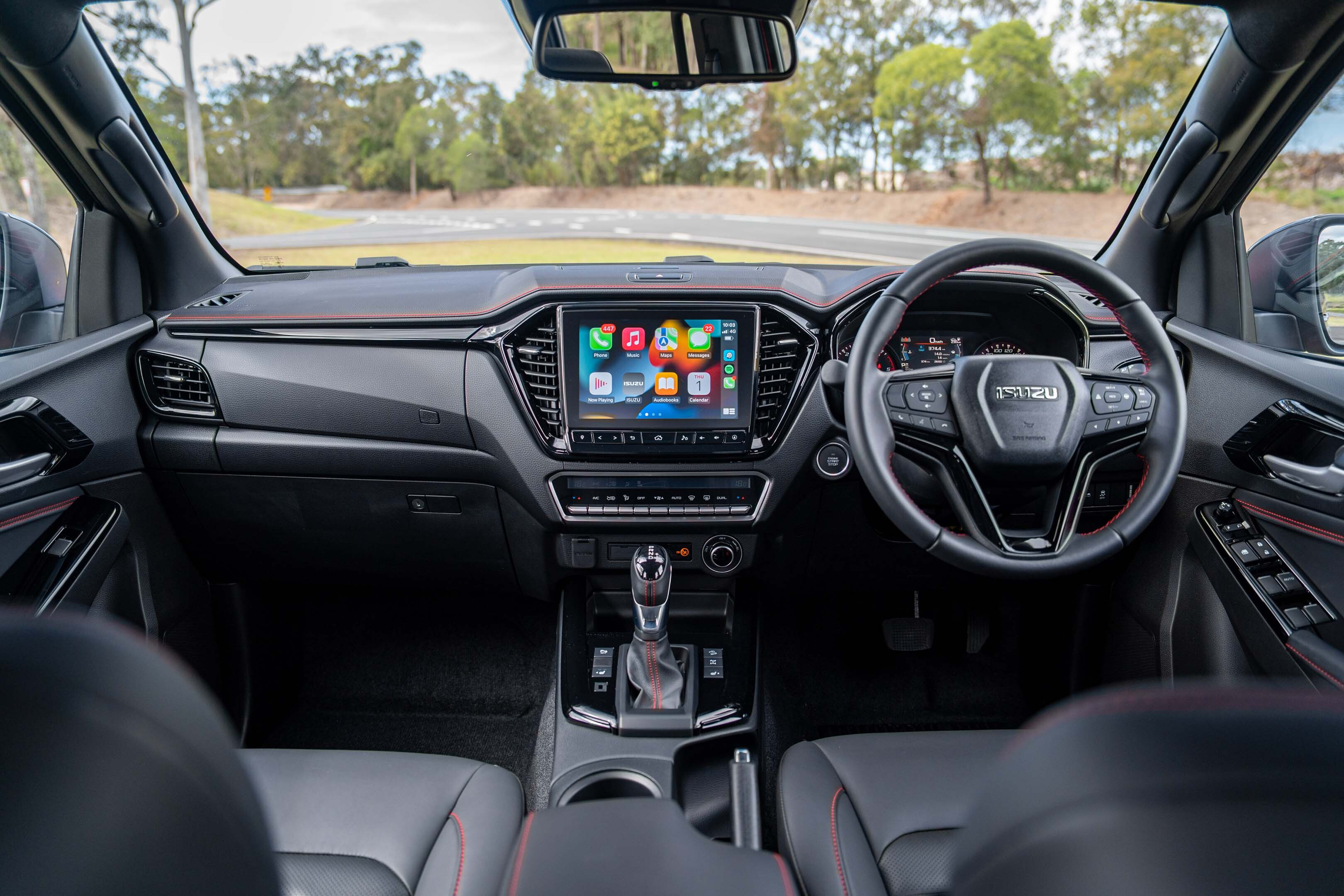
Sadly the 1.9-litre SX 4×4 budget off-roader wasn’t yet available for testing, but at $52,200 — $2000 cheaper than its otherwise identical 3.0-litre SX sibling — it offers compelling value for fleets, young families, or tradies keen on saving a few dollars at the dealer and the fuel bowser.
For 2023 the improvements don’t necessarily equate to ‘more value’, but they’re all sensible improvements that any buyer — especially those being upgraded to the new model free of charge — will appreciate.
As the photos will show, a few new colour options were added to the range including Neptune Blue, Moonstone White, and the suitably gruff Granite Grey for the X-Terrain.
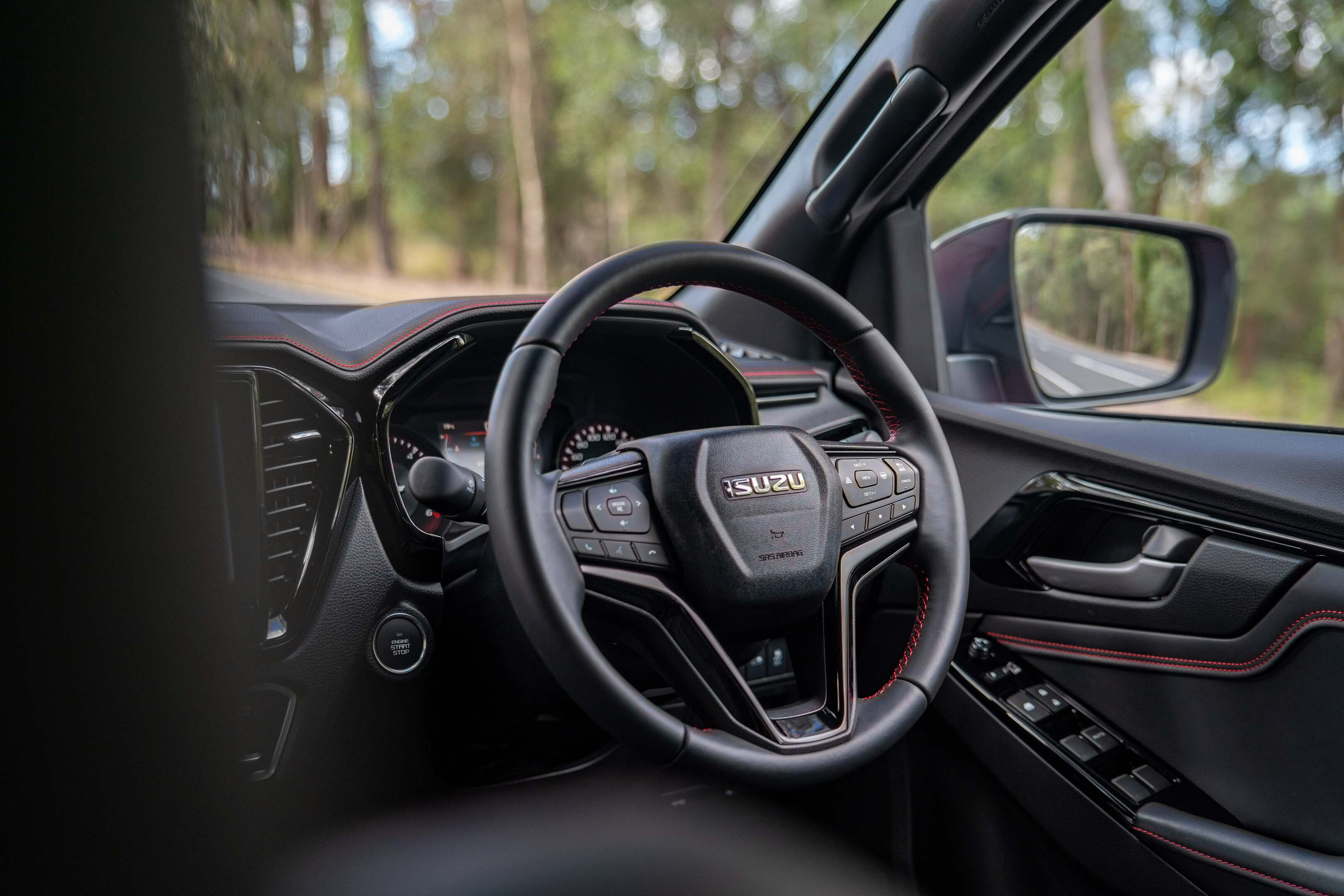
Wheel design is subjective, but the D-Max has had some polarising wheel options this generation – and off the back of customer feedback, Isuzu has introduced new designs across the board.
A new grille design is finished in a range of two-tone colour schemes from black and grey for base models, to different shades of grey-on-grey for the LS-U and LS-U+ and the top dog X-Terrain. The darker design theme carries over to the rear too, with grey inserts for the LED taillights.
Our favourite visual change are the better wheels. Of course, wheels are subjective, but the latest generation D-Max has had some polarising wheel options, and off the back of customer feedback Isuzu introduced new designs across the board. The X-Terrain’s 18-inch dark grey alloys, wrapped in Bridgestone Duellers, were our pick of the bunch.
While on the topic of wheels, our favourite tech upgrade is the addition of tyre pressure monitoring — although when beach driving with the pressures down, you lose the use of the centre driver display for things like fuel economy.
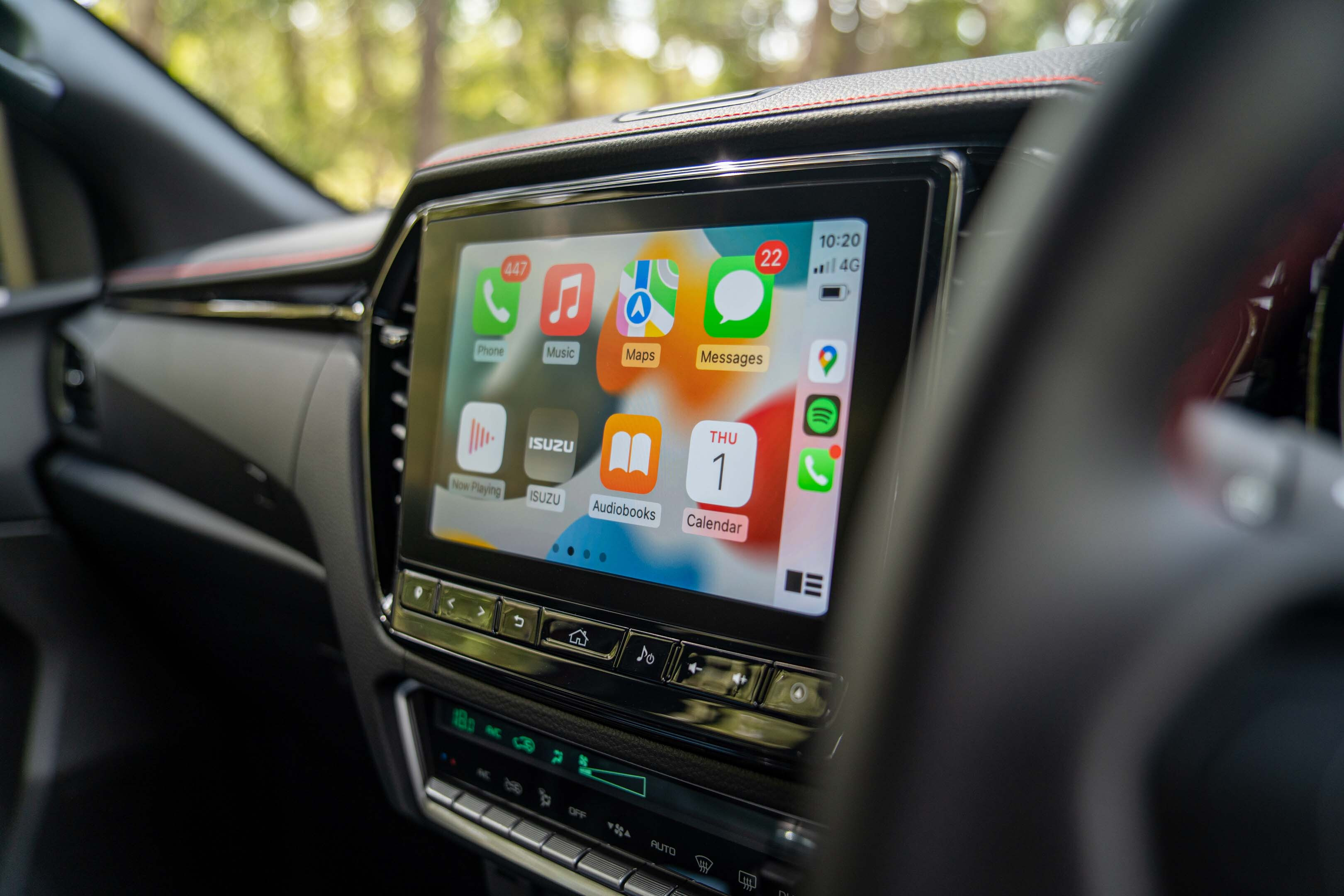
It’s no big deal, but it would be good if there was a way to tell the car you’ve deliberately dropped pressures or navigate away from the low-pressure warning screen.
A handy safety system tweak is the automatic disabling of blind-spot monitoring and rear cross-traffic alert functions when a trailer is hitched. Isuzu isn’t the first to think of this, but considering half of all owners tow (according to Isuzu), it’s a smart move.
The only other noteworthy change, and a rather obscure one, is the tailgate ‘assist’ feature.
Apparently, customers were complaining about heavy tailgates, so Isuzu fitted two gas struts — one for lowering, one for raising — to significantly lighten the load. It’s not until you feel how light it is that you realise this should be the norm on all modern utes.
Interior comfort, space and storage
We tested the most luxurious LS-U+ and sportiest X-Terrain, and they really highlight the best of what Isuzu offers.
Inside each, it’s leather as far as the eye can see compared with the cloth and wipe-down vinyl finishes of the lower grade SX and LS-M.
Isuzu says it updated the selection of seat upholstery trims, but really the interiors feel about the same as the current models, bar an additional 2.1Amp USB port in the second row of SX models.
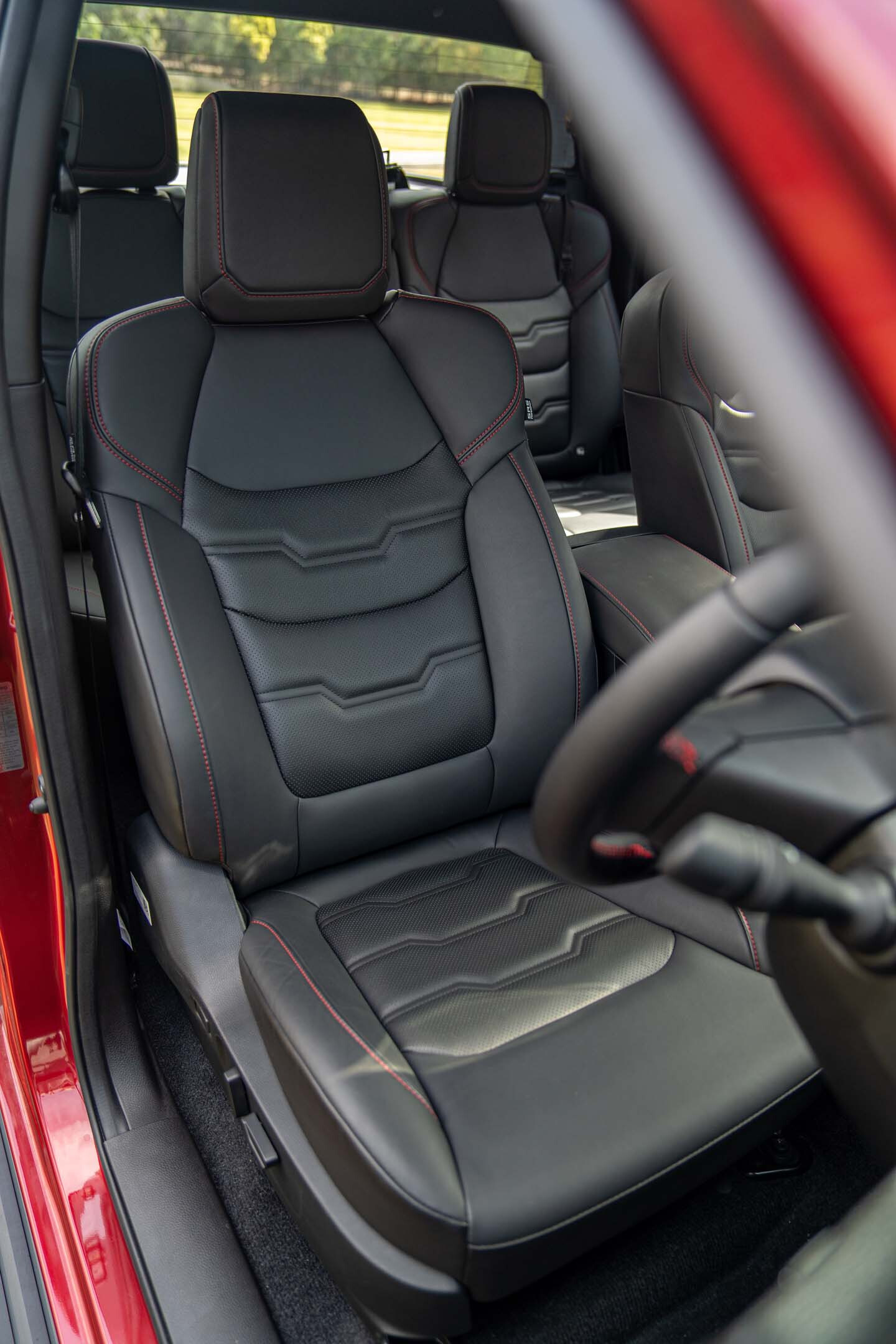
The X-Terrain stands out a little over the LS-U+, with red stitching and a slightly sportier feel, but the seats appear to be identical under the leather. They offer sensational bolstering, comfort, and eight-way electronic adjustability. Isuzu’s seats are a winner, plain and simple.
Smart entry and walk-away door lock feature on LS-U, LS-U+ and X-Terrain models and they also get bush-button-start. Lower spec LS-M and SX models are a good old-fashioned key-in-ignition job.
The LS-U, LS-U+ and X-Terrain get a 9-inch centre display, while the LS-M and SX still only get 7-inches of screen to play with. The infotainment system comes with DAB+, navigation, wireless Apple CarPlay, and Android Auto is still wired for 2023.

It might not be the most sophisticated interior, but it’s the ‘cargo pants of cabins’ with its endless storage options.
Front and rear USB charging points should keep phones juiced, but there’s still no wireless charging pad.
The cabin isn’t overly tech rich, but between the infotainment screen, dedicated climate controls, and steering wheel controls, it’s a very simple vehicle to operate on the fly.
It might not be the most sophisticated interior, but it’s the ‘cargo pants of cabins’ with its endless storage options. The wildly handy D-Max side cupholders remain, as do the huge door pockets, top storage box, and cavernous centre compartment.
Legroom and overall comfort is up there with the best, but like all dual-cabs the second row is a tad cramped. It’s a utility, so the 1495mm (L) x 1530mm (W) x 490mm (D) tray offsets any comfort woes with its 970kg payload. Provided you carry some straps, there’s no shortage of carrying capability.
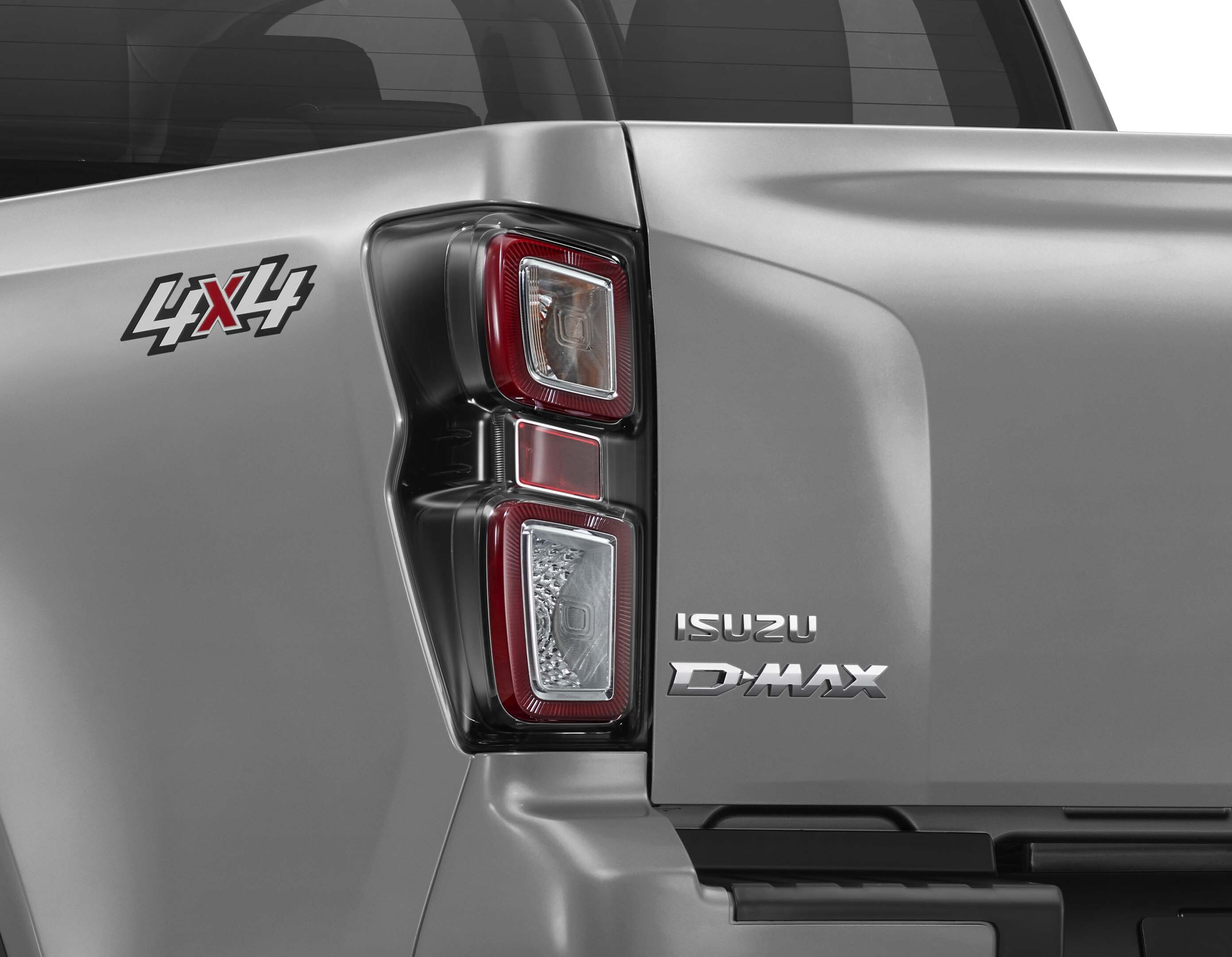
What is it like to drive?
| Engine | 3.0L turbo-diesel |
|---|---|
| Power @rpm | 140kW @ 3600rpm |
| Torque @rpm | 450Nm @1600-2600rpm |
| Transmission | 6-speed automatic |
The D-Max is a solid performer, no matter the model variant, but the LS-U+ and X-Terrain – with 18-inch wheels and a little more weight over the back with roller covers fitted – ride the best.
Without a load, the leaf-sprung rear can get a bit jolty on rough roads or off-road tracks, but Isuzu has the setup dialled and it’s a small price to pay for good load carrying ability.
The D-Max is an all-rounder that’s equally happy dawdling around town, stretching its legs on the highway, or throwing roost on the beach. Much of that comes down to the engine, and its sheer flexibility.
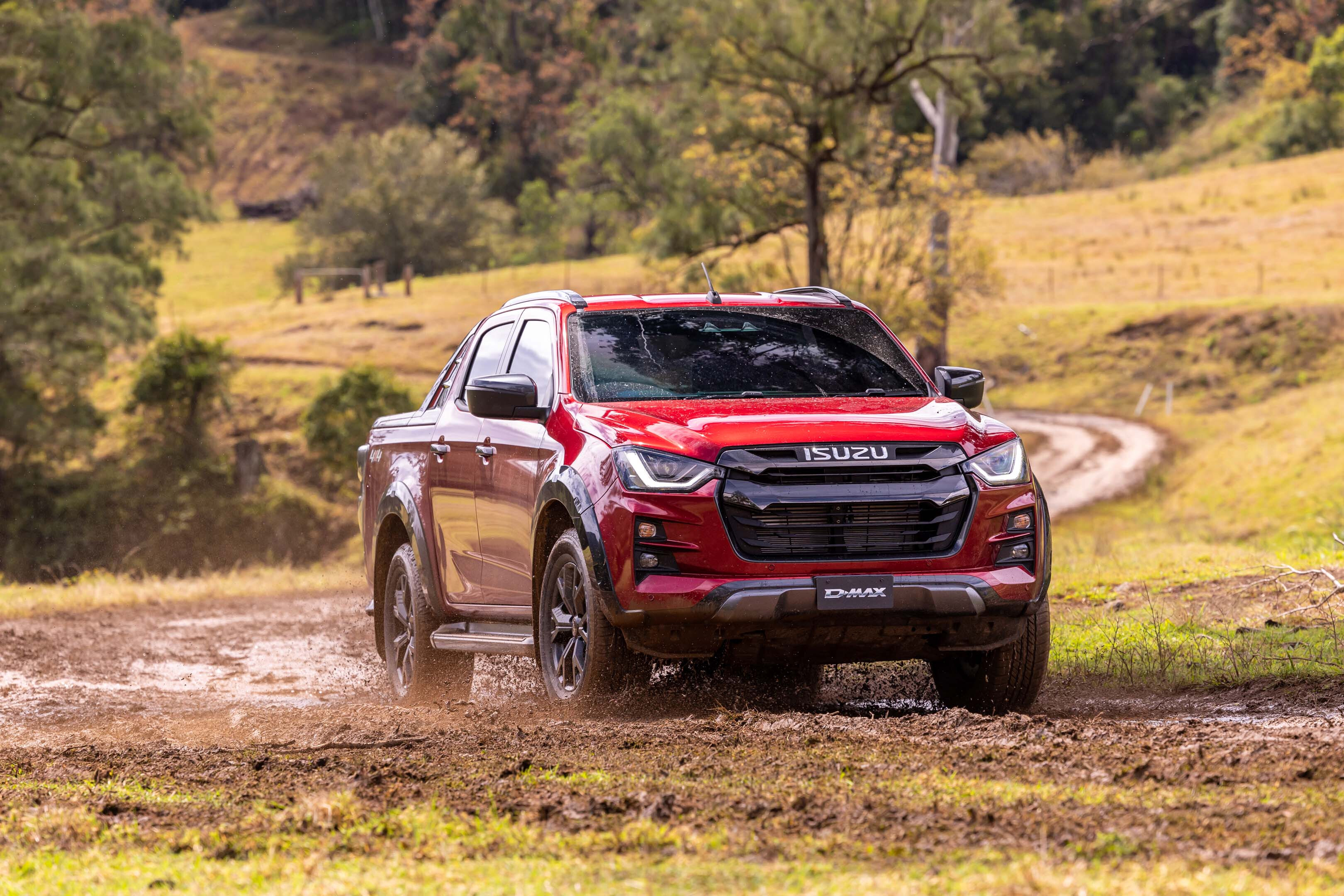
The under-stressed 3.0-litre turbo-diesel delivers 140kW and 450Nm, with peak torque from just 1600rpm. Its meaty torque spread can be used to lug along or pile on pace without the six-speed auto fumbling for the right gear.
And on that, many will argue the six-speed auto is a bit outdated as seven- and eight-speed gearboxes become the norm. Mated to the torquey 3.0-litre, which produces 300Nm at just 1000rpm, the six-speed works.
Steering has always been a strongpoint for the D-Max since Isuzu moved to an electronic system in 2020. It’s light at low speeds, but firms up considerably by the time the speedometer is into triple digits, and the feedback off-road is fantastic.
It’s a surprisingly fun ute on b-roads, and across our testing there were plenty.
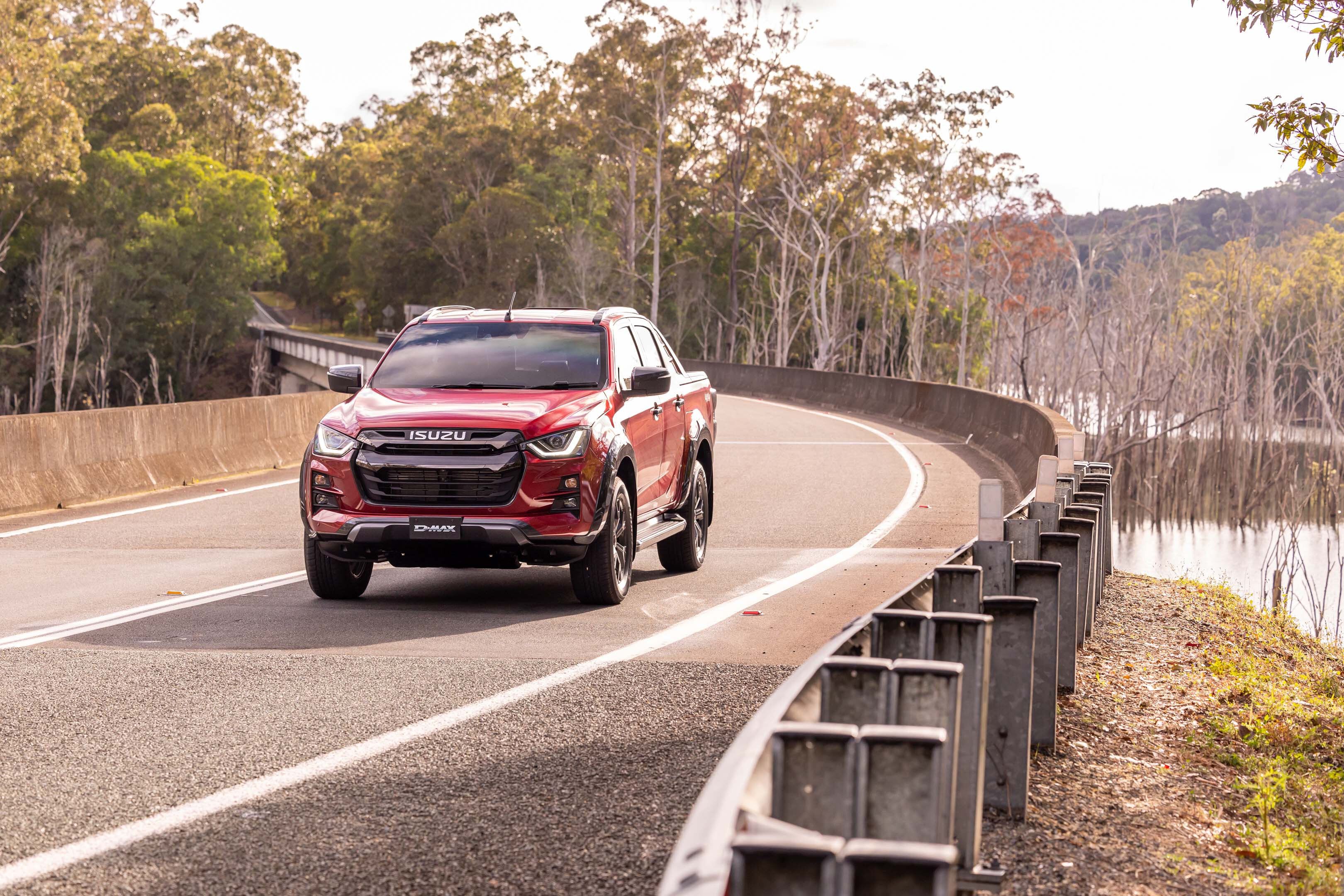
Yes, it wallows and rolls, and no it doesn’t stop with the urgency of a similarly heavy performance SUV, but it’s enjoyable on-road.
Off-road the D-Max shines, but the same could be said of any true 4×4. It’s the analogue experience, though, with a good old fashioned transfer case and not a drive mode in sight. Across a day of beach driving all there was to do… was drive.
For those wanting the SUV experience in a ute, the D-Max may be a bit gruff. It’s refined, but it’s louder than some other diesel competitors and it’s bumpier too. Its appeal lies is in its value, and do-it-all ability.
The 2023 D-Max offers small refinements that go a long way on an already great ute, and it’s a hard one to fault after two days of on- and off-road driving.
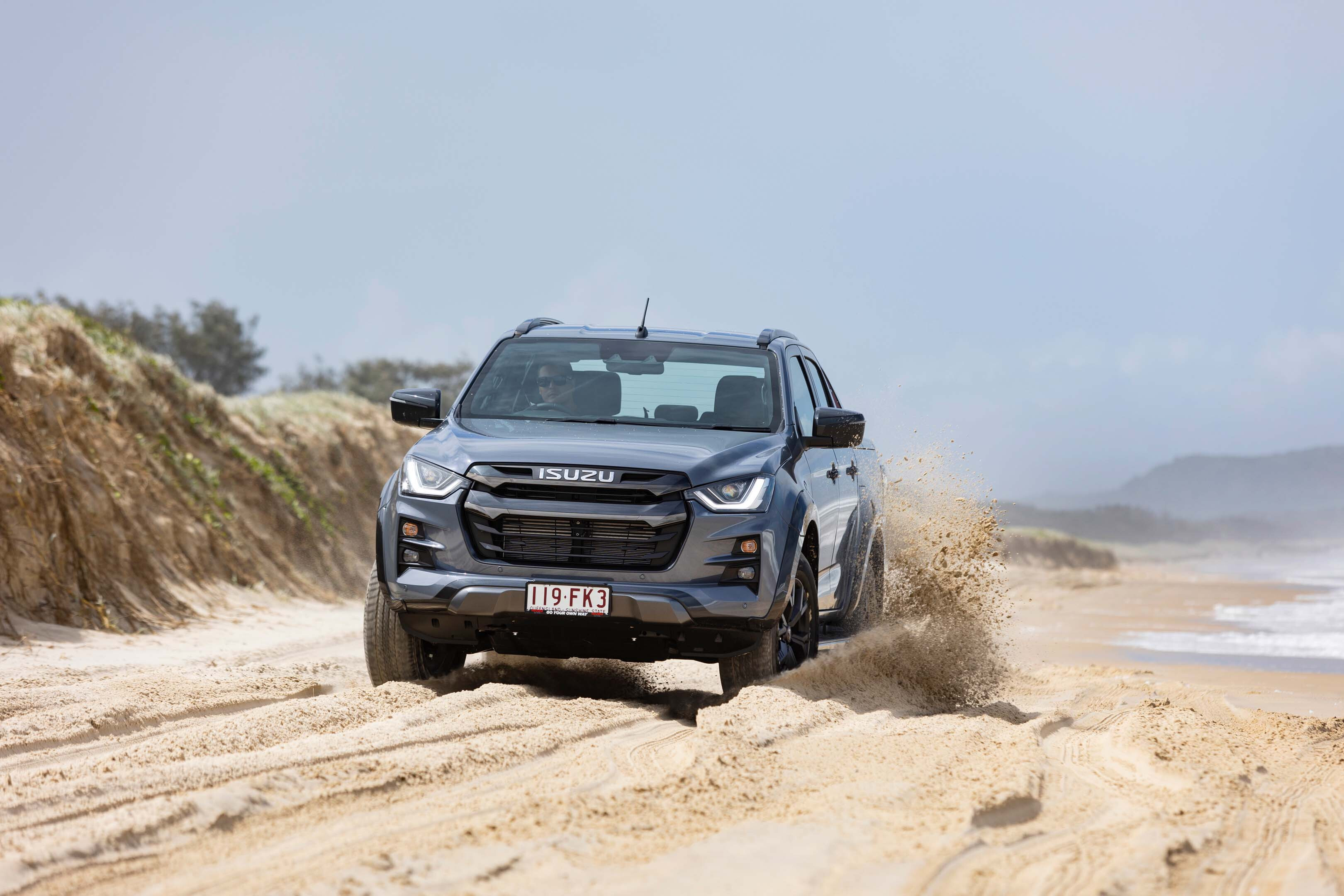
How is it on fuel?
Across two days of on- and off-road testing, results were consistent across the two models.
The X-Terrain used 9.5L/100km and the LS-U+ showed 9.6L/100km — bearing in mind those figures were taken after a decent bashing on the sand.
With more highway use, and kept away from lead-footed journos, the current generation D-Max tends to hover around the high-eight to low-nine litre mark.
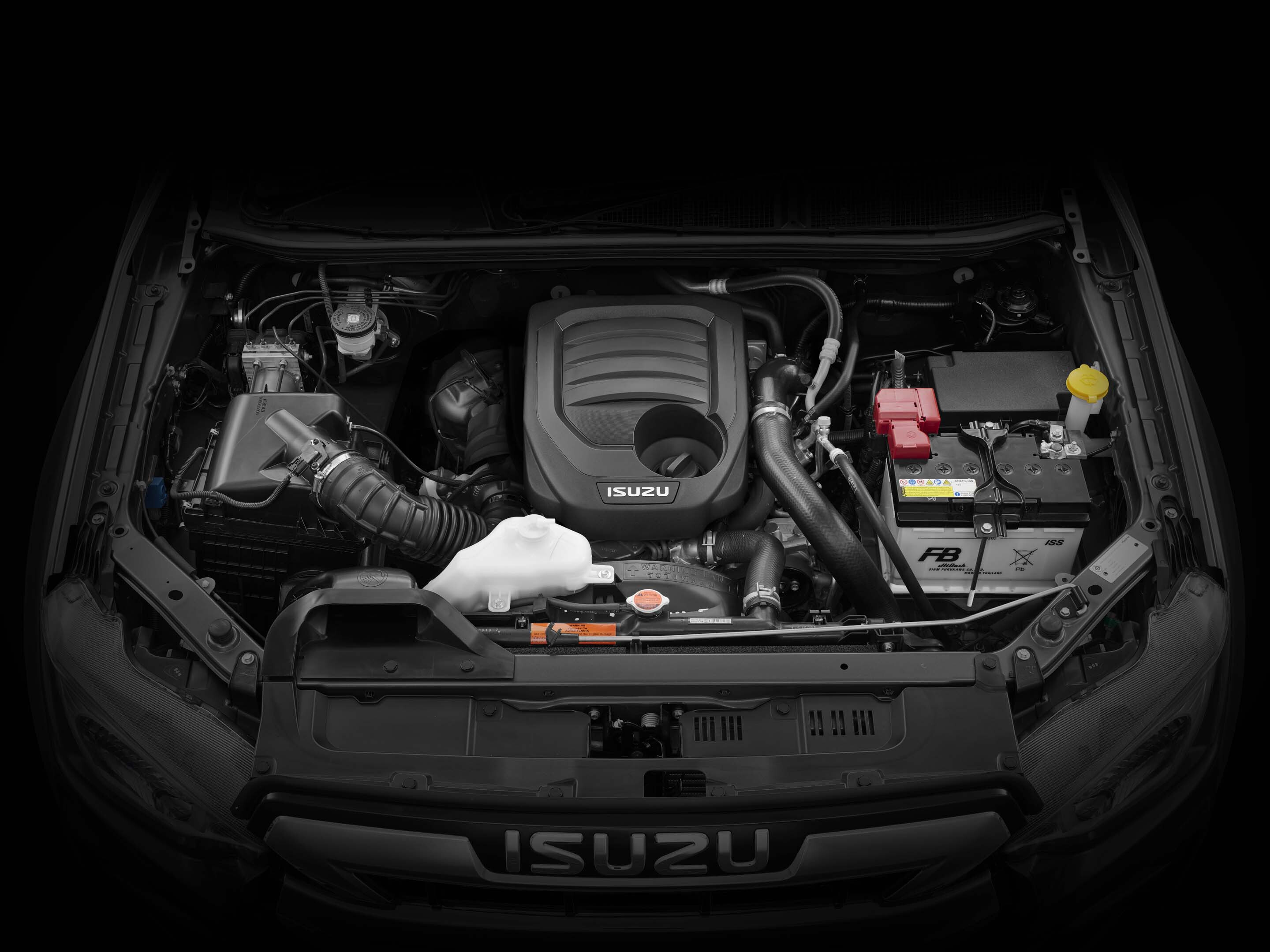
How safe is it?
All D-Max variants scored a full 5-star ANCAP safety rating when the latest generation launched in 2020 and were again tested recently, achieving the same result.
All models boast eight airbags and Isuzu’s safety system as standard across the entire range.
Isuzu puts its Advanced Driver Assistance System (IDAS) in every model, even the budget 4×2 SX workhorse, with autonomous emergency braking, blind-sport monitoring, forward collision warning, rear-cross traffic alert, traffic sign recognition, lane departure warning and emergency lane keeping.
It’s an unintrusive system for the most part, but there is also the lane support system switch on the steering wheel that turns the systems off at the press of a button.
ANCAP crash safety results

Warranty and running costs
Isuzu’s ‘Service Plus 6-7-7’ warranty will remain for 2023, comprising a 150,000km six-year warranty, seven years’ capped-price servicing, and seven years’ roadside assist.
Trips to the dealer for an oil change will roll around every 15,000km or 12 months, and capped price servicing ensures a fixed cost for the first 105,000km.
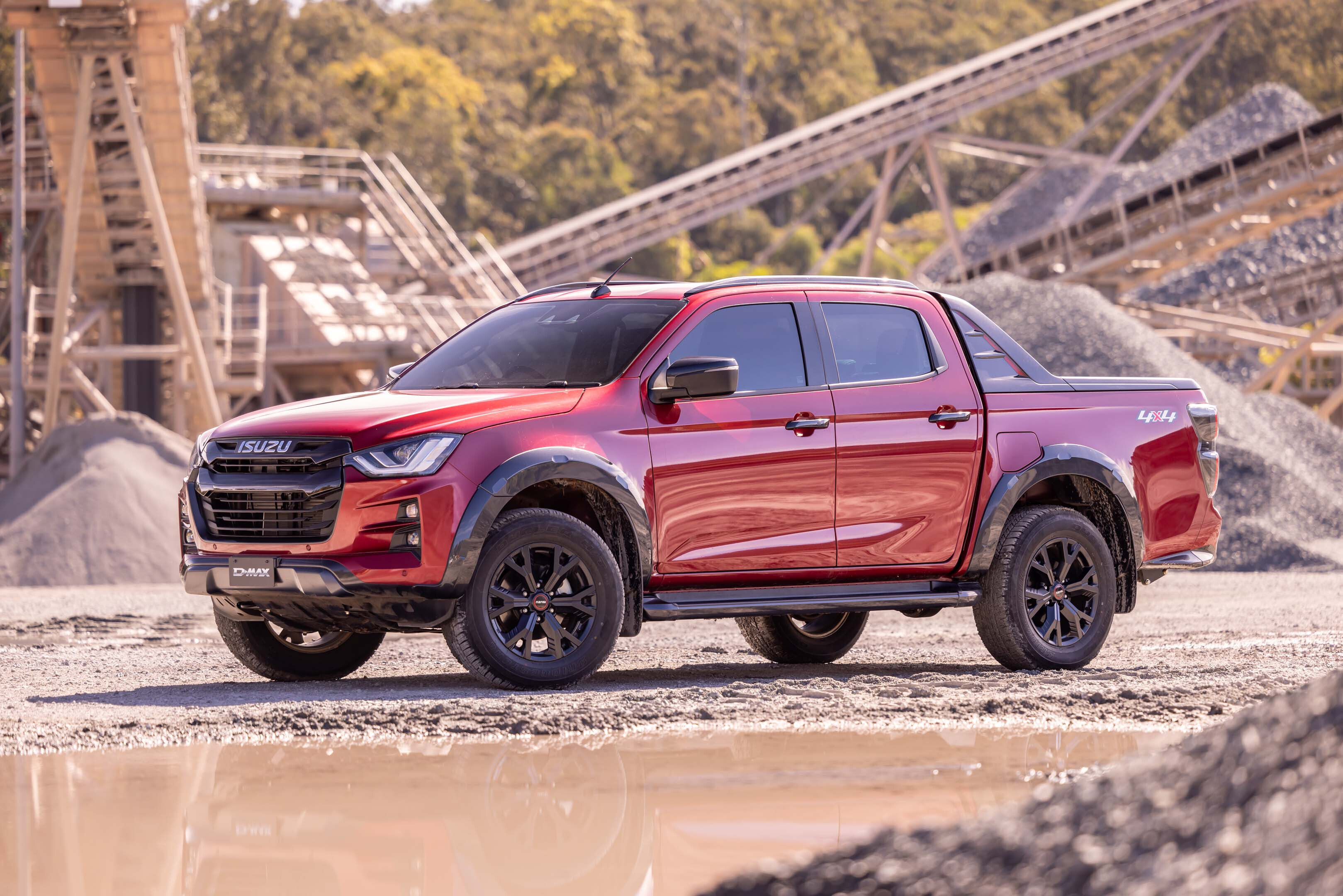
VERDICT
Isuzu has developed a ute that’s very good at the things it needs to do well.
It isn’t quick like a Raptor, it won’t rock crawl like a Wrangler, it mightn’t have the luxury of an Amarok, but it’s arguably the best all-rounder.
The X-Terrain and LS-U+ that we tested sit parallel to each other in the D-Max line-up, we think, aimed at slightly different buyers.
It’s clear the LS-U+ is the slightly fancier of the two, appealing to those who favour an understated dual-cab ute, but with all the trimmings.
There’s no denying, though, that the X-Terrain brings the value with its special drive-away price ($64,990) and, with the new Granite Grey paint option, the toughest looks too.
2023 Isuzu D-Max specifications
| Engine | 3.0L turbo-diesel | |
|---|---|---|
| Power @rpm | 140kW @ 3600rpm | |
| Torque @rpm | 450Nm @1600-2600rpm | |
| Transmission | 6-speed automatic | |
| Body | Four door utility | |
| L/W/H | 5303mm | |
| Wheelbase | 3125mm | |
| Weight | 2165kg | |
| Fuel / tank | Diesel / 70L | |
| Fuel use L/100km | 8.0L (claimed) | 9.5/9.6L (on test) |
| Suspension | double wishbone (f) / leaf (rear) | |
| Steering | electric power steering | |
| Brakes | disc (f) / drum (r) | |
| Wheels | 18-inch alloys | |
| Tyres | Bridgestone 684II HT | |
| Tyre size & spare | 265/60 R18 with full-size spare | |
Score breakdown
Things we like
- Biggest capacity 4-cylinder engine in class
- Top-spec D-Max a comparative bargain at $64,990
- Best out-of-the-box styling for the D-Max so far
Not so much
- No wireless charging
- 4J engine is noisy, by modern diesel standards
- Firm rear, harsh compared to coil rear options


